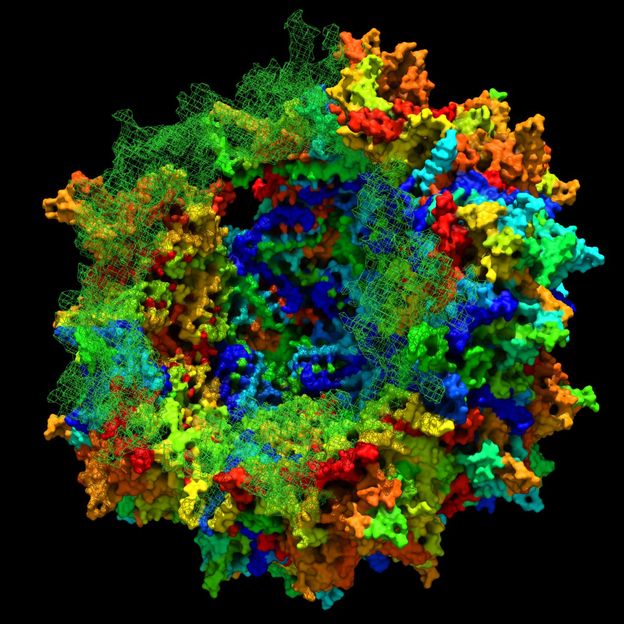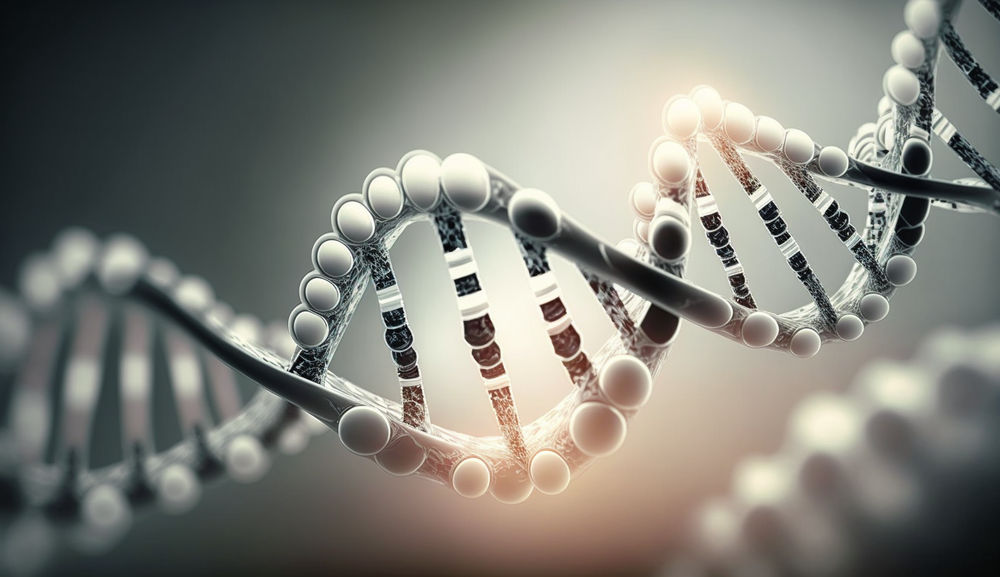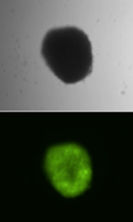Researchers resurrect ancient viruses in hopes of improving gene therapy
Advertisement
Harvard Stem Cell Institute (HSCI) researchers at Massachusetts Eye and Ear (MEE) have reconstructed an ancient virus that is highly effective at delivering gene therapies to the liver, muscle, and retina. This discovery could potentially be used to design gene therapies that are not only safer and more potent than therapies currently available, but may also help a greater number of patients.

This is a cartoon depicting Adeno-associated viral capsid in formation by ancestral sequence reconstruction
Eric Zinn
Given its basic nature, a virus can be an ideal delivery system for gene therapy. Taking advantage of this, researchers can insert therapeutic genes into a virus, then use the viruses to shuttle the genes to the appropriate cells or tissues inside a human body.
So far, AAVs used for gene therapy have been chosen from viruses that naturally circulate throughout the human population. If patients have been exposed to the virus, their bodies will likely recognize the virus and destroy it before it can deliver the therapy. Engineering new, benign viruses could render the viruses unrecognizable and increase the number of people for whom a given gene therapy will work.
However, efforts to engineer improved AAVs have been stymied by the intricate structure of these viruses. Like pieces of a jigsaw puzzle, every protein in the shell of the virus must fit together perfectly for the virus to function normally. Altering proteins in one part of the virus to achieve a certain benefit, such as more efficient gene transfer or reduced recognition by host immune cells, could end up destroying the structural integrity of the entire shell.
To overcome this challenge, Luk H. Vandenberghe, an HSCI Affiliated Faculty member and his colleagues at Harvard Medical School, Schepens Eye Research Institute, and MEEI have turned to evolutionary history for guidance. Over time, AAV ancestors have undergone a series of changes that kept the structural integrity of the virus while slightly altering some of its functions. The researchers were able recreate an evolutionary timeline of the changes and build in the laboratory nine synthetic ancestors viruses. When injected into mice, the most ancient, ANC80, successfully targeted the liver, muscle and retina without producing toxic side effects.
Original publication
Eric Zinn, Simon Pacouret, Vadim Khaychuk, Heikki T. Turunen, Livia S. Carvalho, Eva Andres-Mateos, Samiksha Shah, Rajani Shelke, Anna C. Maurer, Eva Plovie, Ru Xiao, Luk H. Vandenberghe, "In Silico Reconstruction of the Viral Evolutionary Lineage Yields a Potent Gene Therapy Vector", Cell Reports, 2015
Other news from the department science
Most read news
More news from our other portals
See the theme worlds for related content
Topic world Gene therapy
Genetic diseases once considered untreatable are now at the center of innovative therapeutic approaches. Research and development of gene therapies in biotech and pharma aim to directly correct or replace defective or missing genes to combat disease at the molecular level. This revolutionary approach promises not only to treat symptoms, but to eliminate the cause of the disease itself.

Topic world Gene therapy
Genetic diseases once considered untreatable are now at the center of innovative therapeutic approaches. Research and development of gene therapies in biotech and pharma aim to directly correct or replace defective or missing genes to combat disease at the molecular level. This revolutionary approach promises not only to treat symptoms, but to eliminate the cause of the disease itself.
















































